|
Monday 23rd to
Sunday 29th October 2023 |
| |
|
Tuesday 24th is an excellent opportunity to
observe Venus as the planet reaches its greatest western elongation from the
Sun, separated from it by 46 degrees. The planet will be shining brightly
at a magnitude of around -4.5 in the early morning sky. |
| |
|
If you look towards the east, Venus appears
above the horizon from 4am and it will be very easy to spot with the naked
eye. |
| |
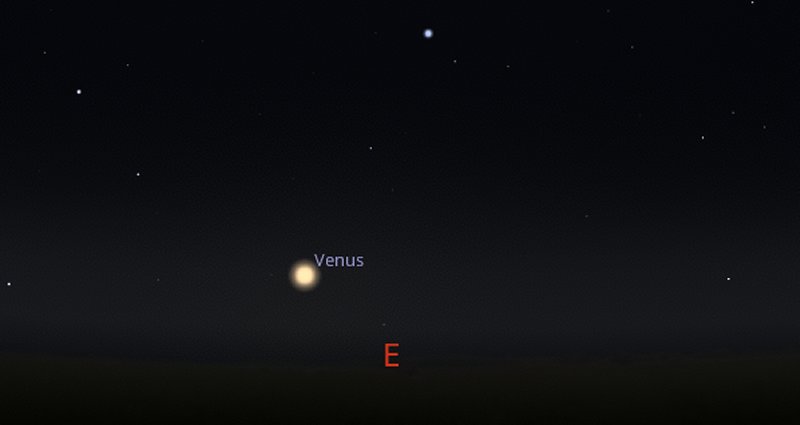 |
| |
|
During the evening of Saturday 28th, we have
a partial lunar eclipse. The event occurs between 8.30pm and 10pm. At that
time, the Moon will be located towards the east, a little above and to the
right of Jupiter. |
| |
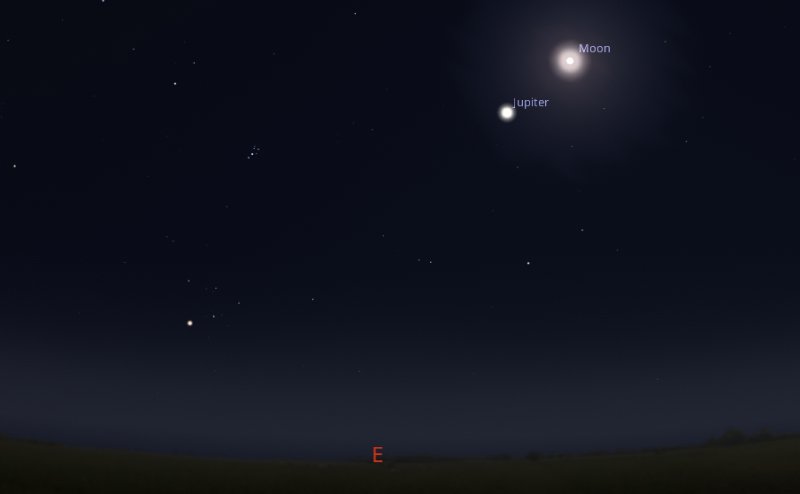 |
| |
|
The main part of the eclipse, also known as
the umbra, will be seen as a shadow across the southern part of the Moon's
face, just below the large crater Tycho. |
| |
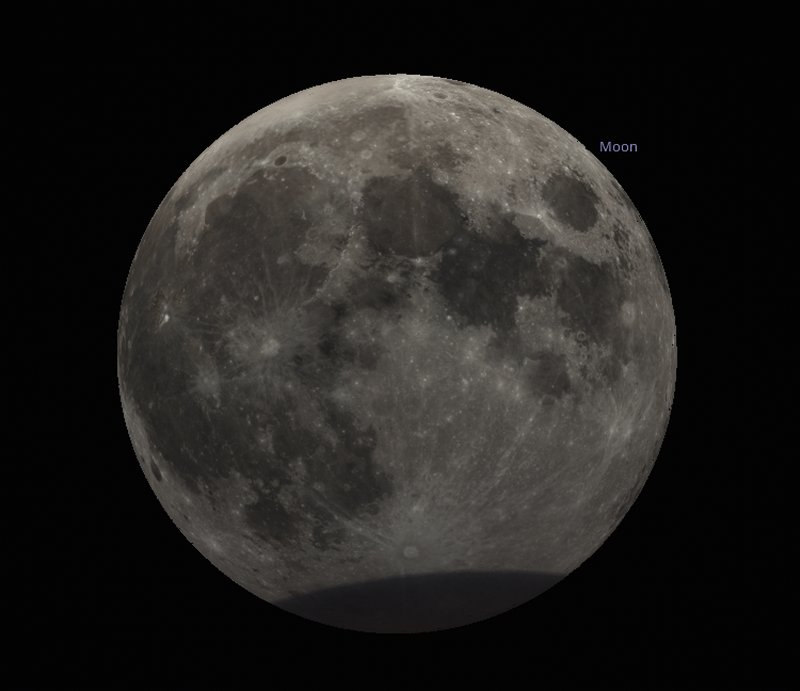 |
| |
|
A lunar eclipse occurs when the Moon passes
through the shadow cast by the Earth or in other words, we are blocking some
of the sunlight from reaching the Moon's surface. |
| |
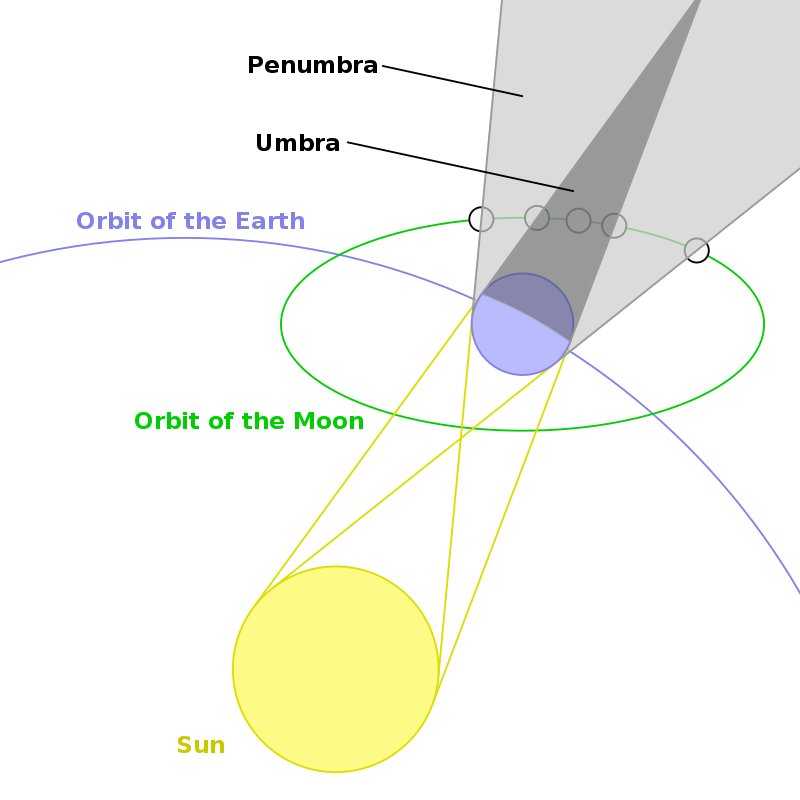 |
| |
|
Finally, a reminder that British Summer Time
ends at 2am on Sunday 29th. The clocks go back an hour to 1am. There are
two bonuses - firstly we get an extra hour in bed that morning and more
importantly, I don't have to keep adding an hour on to my Stars Over
Somerset reports. Astronomers, in common with many other sciences, don't
bother with different time zones and summer times - they stick to the
worldwide standard of UTC or Universal Time Coordinated which happens to be
the same as GMT or Greenwich Mean Time which is what we use during the
winter months. Keeps it nice and simple! |
|
Monday 16th to
Sunday 22nd October 2023 |
| |
|
Just before daybreak on Friday 20th there is
an opportunity to see the shadow of two Galilean moons at the same time on
the surface of Jupiter. If you aim your telescope towards the west at 7am
and find Jupiter, you should be able to see the shadows cast by Io and
Ganymede simultaneously. |
| |
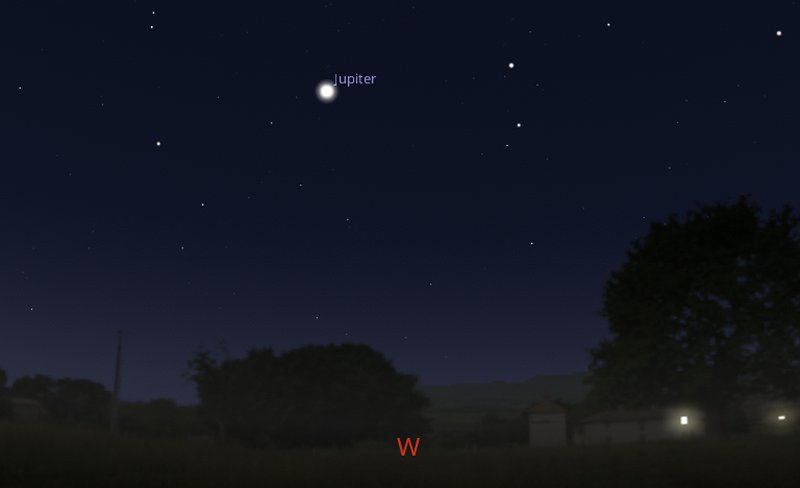 |
| |
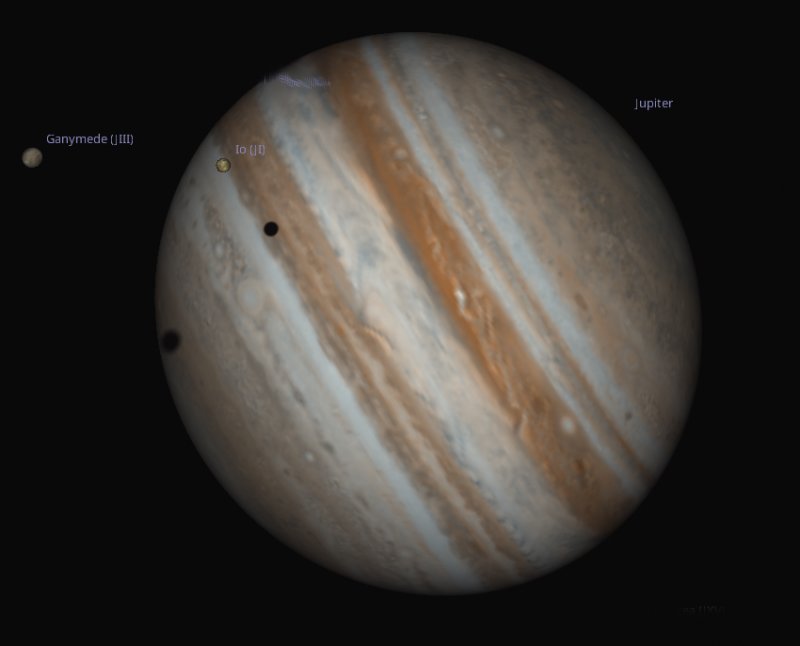 |
| |
|
The late evening of Saturday 21st into the
early morning of Sunday 22nd sees the peak of this year's Orionids meteor
shower. At the actual peak around midnight, you can expect to see up to 25
meteors per hour and the radiant point where they appear to originate from
will be to the left of Betelgeuse, the red giant star in the constellation
of Orion. Around midnight, Orion and the shower's radiant point will be
located towards the east. |
| |
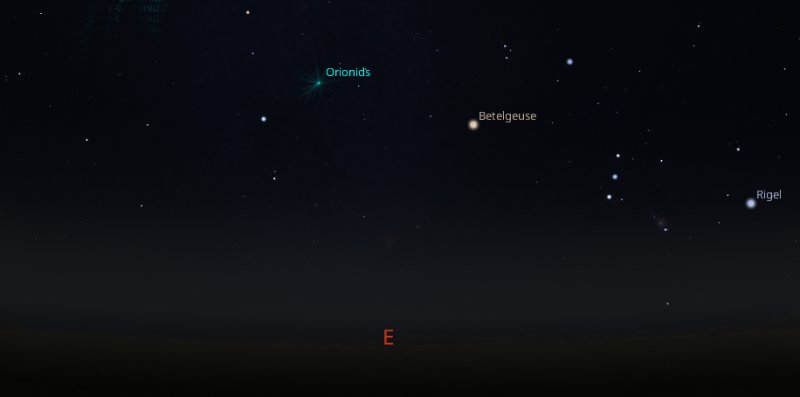 |
| |
|
The shooting stars are created by debris left
behind from the famous comet Halley. As the Earth passes through this
debris on its orbit around the Sun, gravity pulls the tiny particles through
our atmosphere and you see them burning up because of friction as they hit
the ever-thickening air. |
| |
|
I am running the first of this autumn's
astronomy sessions at the Ham Hill Centre on 27th October, but I've just
found out that it is already fully booked. The next one for your diary is
Friday 15th December at 7pm which would make a nice Christmas present.
Early booking is recommended and this can be done via the Visit South
Somerset website by clicking on the advert below: |
| |
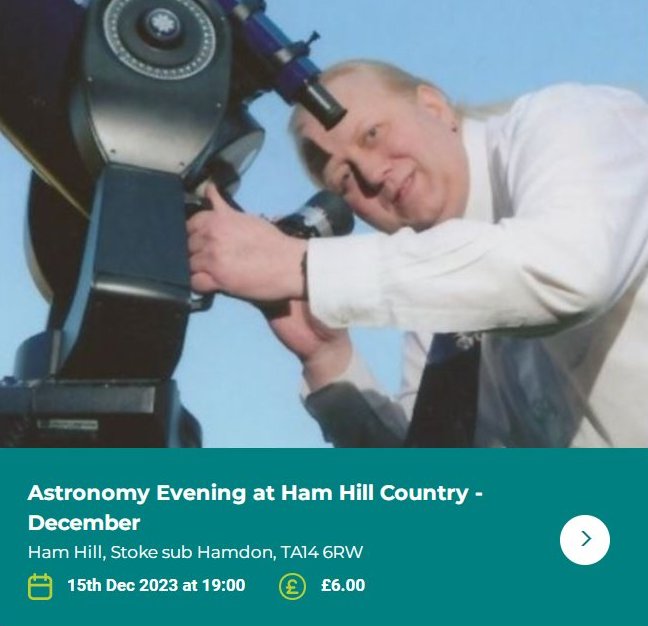 |
|
Monday 9th to
Sunday 15th October 2023 |
| |
|
On Thursday 12th, comet 103P/Hartley, also
known as just Hartley 2 reaches perihelion - the point when it is closest to
the Sun in its orbit. |
| |
|
Now you normally associate comets as coming
from the Kuiper Belt in the far reaches of our outer Solar System and their
orbits around the Sun can take hundreds of years. |
| |
|
Hartley 2 is a bit different in that it
actually originates from the Asteroid Belt between Mars and Jupiter. Its
orbit only takes six and a half years while it sweeps in close to the Sun
and then heads back out to join its mates in the Asteroid Belt. It is known
as a "Jupiter-family" comet because of this. |
| |
|
The comet is peanut-shaped and only has a
diameter of about one mile. You will need binoculars at least to see it as
the magnitude will be around +8.5 |
| |
|
So how do you find it? Venture outside after
1am on the morning of 12th and look towards the east. You will see the
obvious constellation of Orion. To the left of Orion is the constellation
of Gemini, the "Twins", who will appear to be lying on their side. |
| |
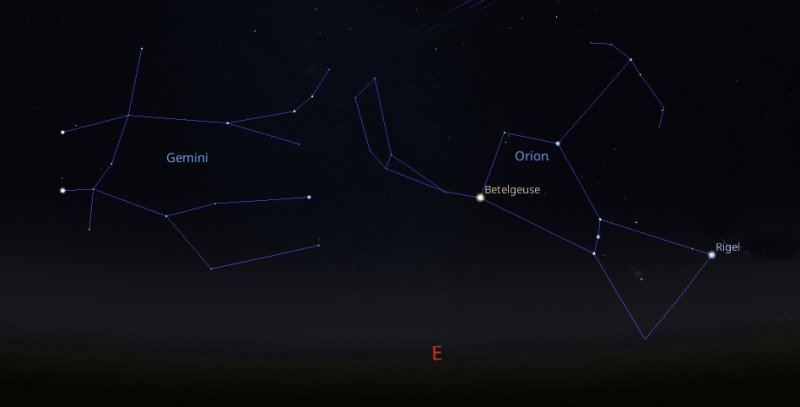 |
| |
|
Locate the star "Wasat" which marks the waist
of the lower twin. Comet Hartley 2 will be situated just below Wasat with
the comet's tail pointing towards the star. |
| |
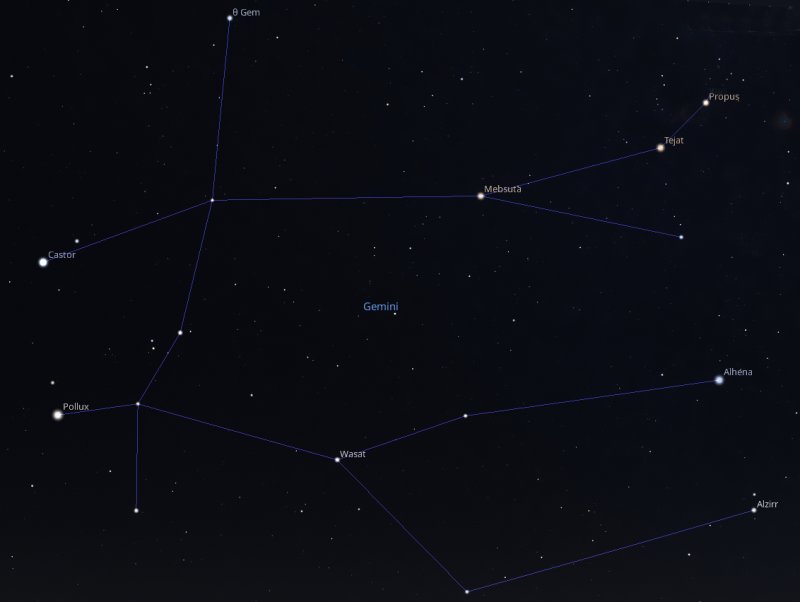 |
| |
|
I have provided an image of the comet,
courtesy of NASA, but this was taken from only 435 miles away by their Epoxi
mission in 2010. You will see a fuzzy blob! The good news is that the Moon
will be below the horizon and so not creating any light pollution! |
| |
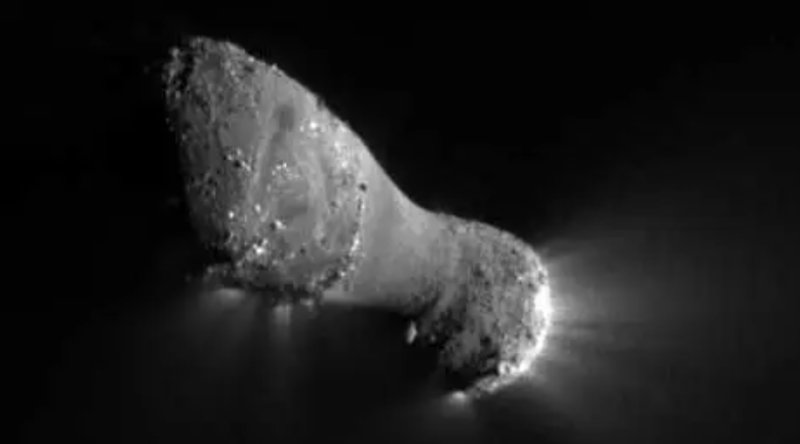 |
|
Monday 2nd to
Sunday 8th October 2023 |
| |
|
We're going to concentrate on Jupiter's moons
as during the coming week, there are several transits where one of the moons
passes in front of the planet, casting a shadow. |
| |
|
Firstly, if you are up at around 2.30am on
Tuesday 3rd and look to the south, you will see Jupiter, with a Gibbous Moon
and the Pleiades cluster to the left of it. Further left again will be the
constellation of Orion. |
| |
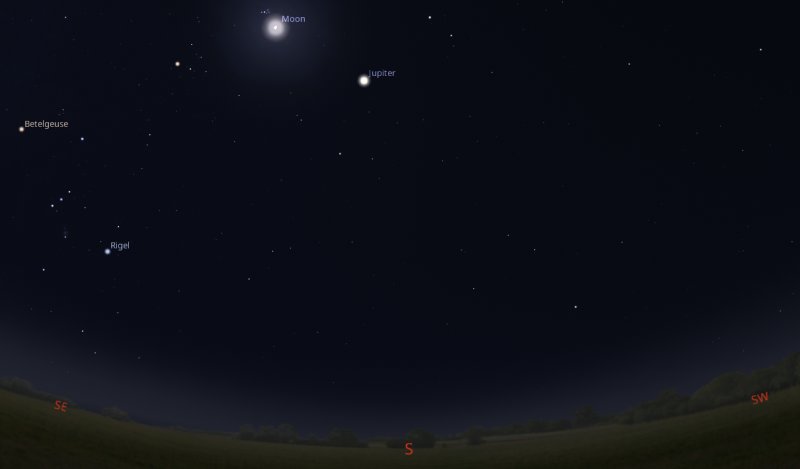 |
| |
|
If you zoom into Jupiter with your telescope
it will be possible to see all four of the Galilean moons, from left to
right - Ganymede, Europa, Io and Callisto. Look closely at Jupiter and you
should see Europa's shadow on the surface of the planet. |
| |
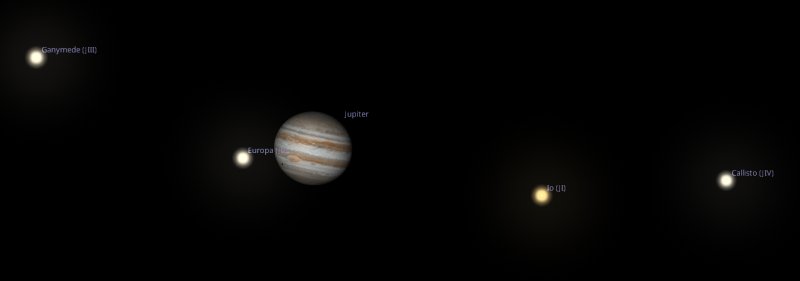 |
| |
|
If you prefer not to stay up so late, try
around 10.30pm on Thursday 5th and you will be able to catch Ganymede's
shadow near Jupiter's south pole. At this time, Jupiter will be more
towards the east. |
| |
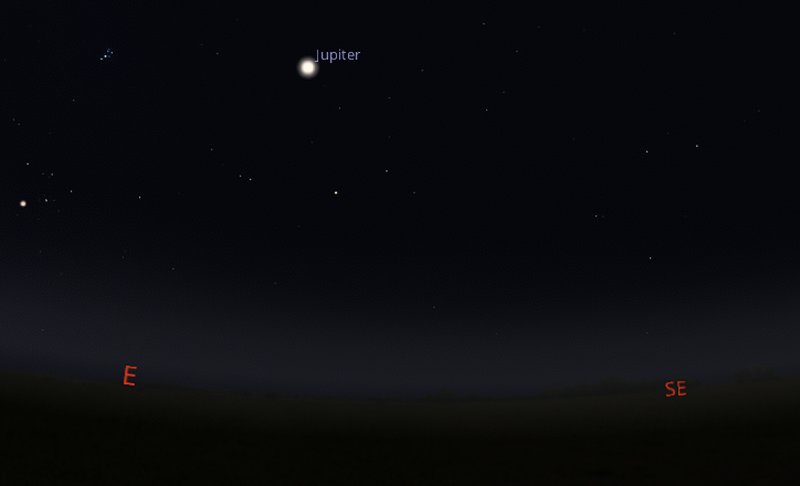 |
| |
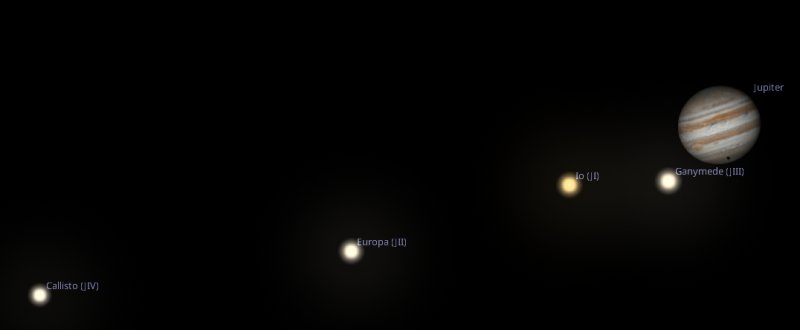 |
| |
|
Should you then decide to stay up really late
and follow Jupiter, from 3am on the Friday morning, it is Io's turn to cast
a shadow. |
| |
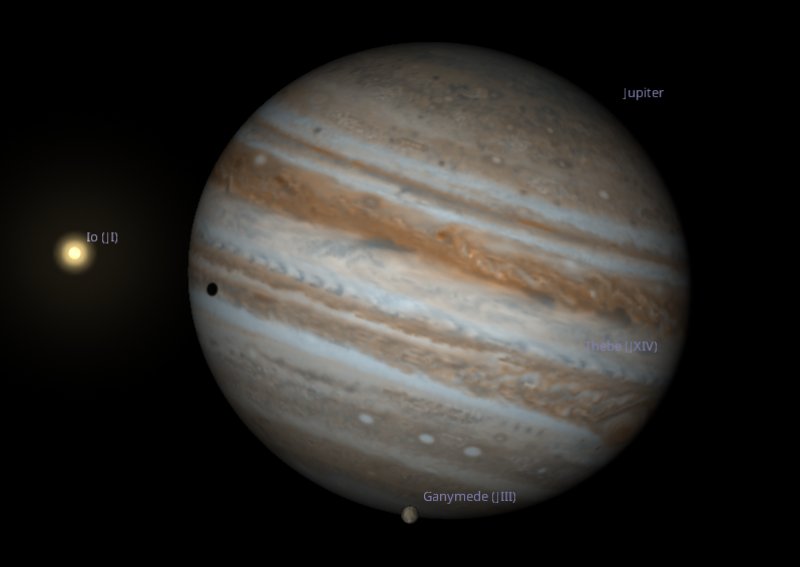 |
| |
|
On a totally different subject, the evening
of Sunday 8th sees the peak of the Draconids meteor shower. Look towards
the north from 8.30pm and find the bright star Vega. The radiant point of
the meteor shower will be a little below the star. |
| |
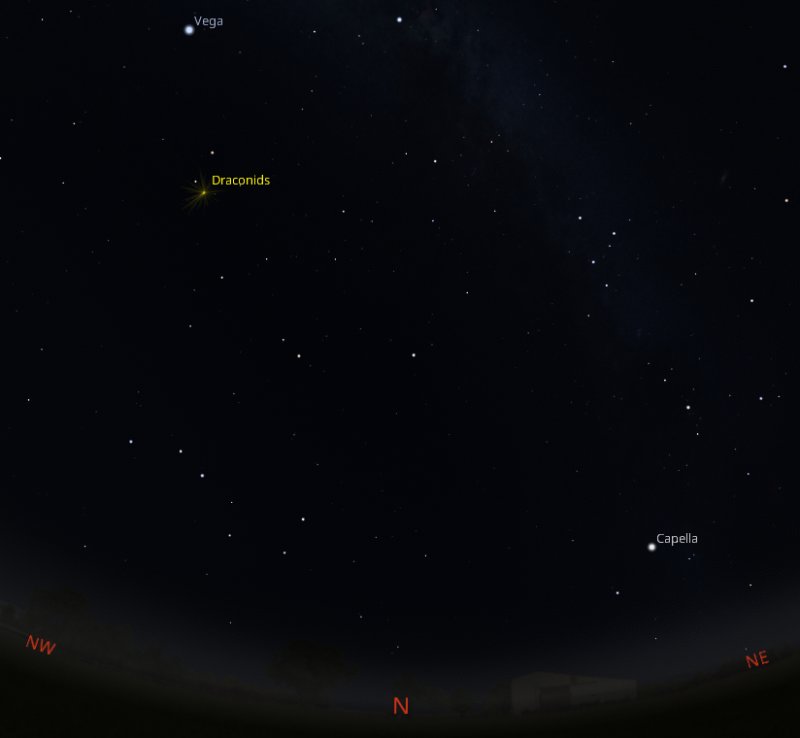 |
| |
|
The shower is so named because its radiant
point appears to be in the same part of the sky as the constellation of
Draco. |
| |
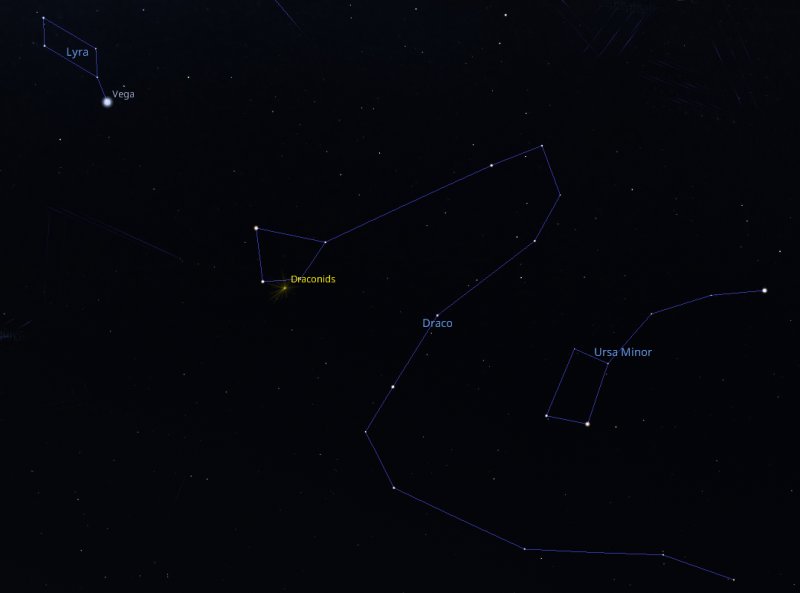 |
| |
|
Finally, I have just agreed to run another
couple of my popular astronomy evenings at the Ham Hill Centre this autumn.
Booking information will be available soon, but in the meantime the dates
for your diary are Friday 27th October and Friday 15th December. |
|
Monday 25th September
to Sunday 1st October 2023 |
| |
|
The evening of Monday 25th is an ideal time
to spot the impact crater on the lunar surface known as Vitello. If you
venture outside around 10pm, a Gibbous Moon will be located to the south,
with Saturn a little above it and to the left. |
| |
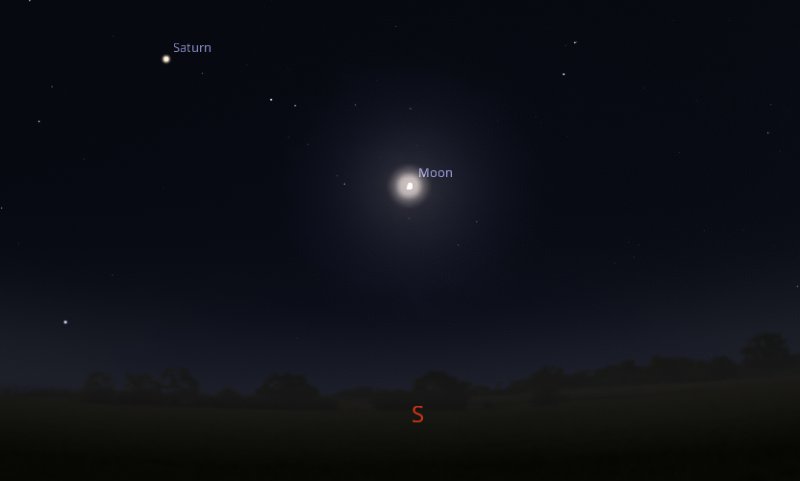 |
| |
|
Imagine the face of the Moon as a clock,
Vitello will be located towards 7 o'clock, on the southern shore of Mare
Humorum. |
| |
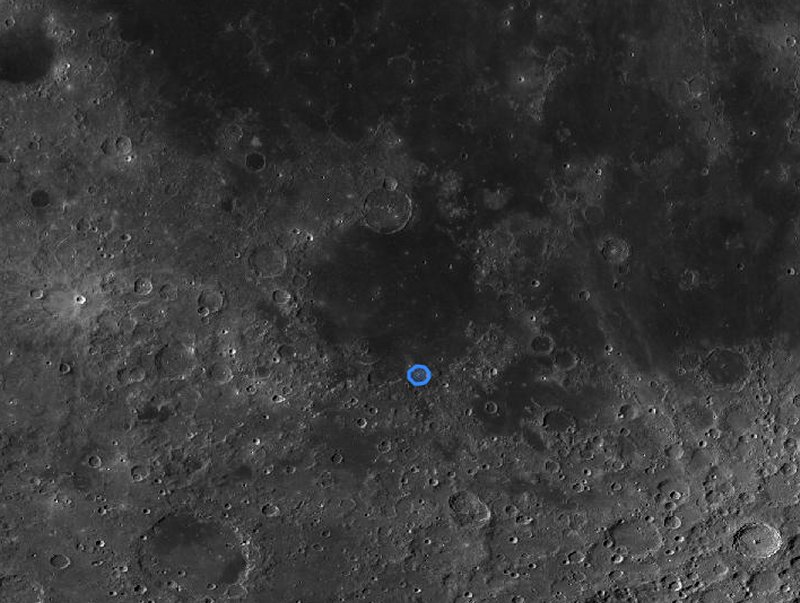 |
| |
|
Vitello location map courtesy of
IAU Working Group for Planetary System Nomenclature |
| |
|
The crater has a diameter of 41Km and is
around 4 billion years old. A telescope will reveal that it has a mountain
complex in the centre and a
very well-defined outer
edge or rim. The craters neighbouring it are not so clear because they
filled with lava, but Vitello has an elevated position, so its rim and floor
were left intact and not destroyed by the ancient lava flow. |
| |
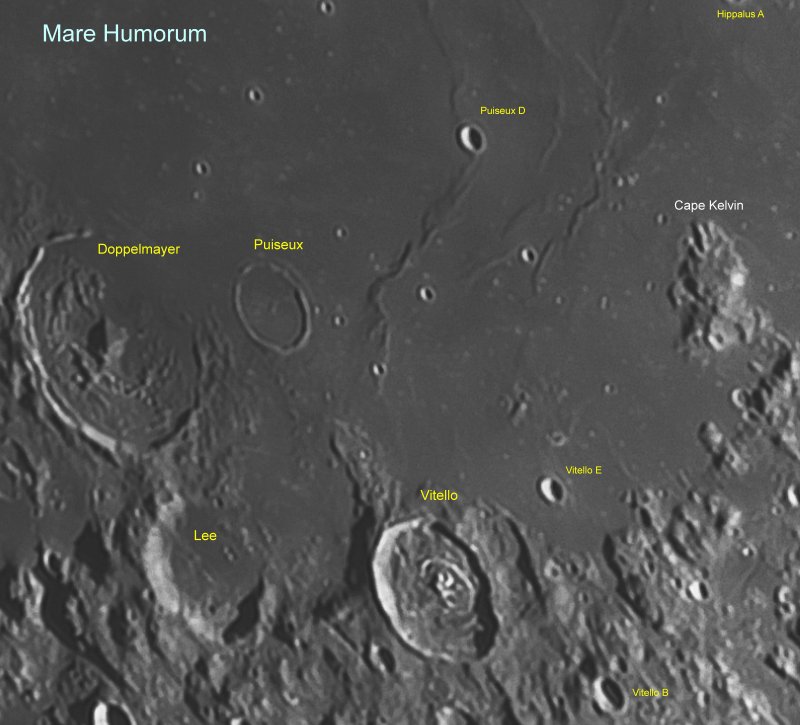 |
| |
|
Vitello image courtesy of Bruce
Rohrlach |
| |
|
After all the excitement of that Blue
Supermoon at the end of August, Friday 29th September sees the next Full
Moon. I mentioned the autumn equinox last week and this Full Moon is known
as the 2023 "Harvest Moon" because it is the closest one to that September
equinox. |
| |
|
There are several opportunities to spot the
International Space Station in the early evening next week, the best chances
being Monday 25th at 7.49pm and Wednesday 27th at 7.50pm. In both cases,
the ISS will appear towards the west and spend about six minutes passing
almost directly overhead before disappearing to the east. |
|
Monday 18th to
Sunday 24th September 2023 |
| |
|
If you are up early, any morning next week
and look towards the east, Venus will have risen above the horizon from
about 4am. It is currently shining very brightly at a magnitude of -4.5 |
| |
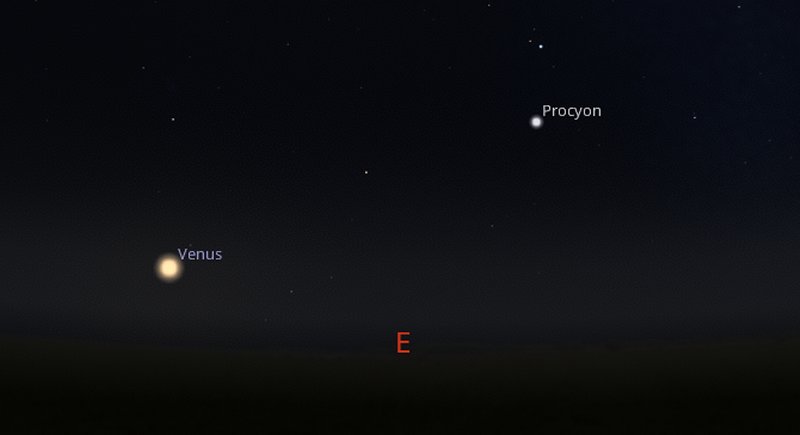 |
| |
|
By around 5.30am, Venus will have climbed
higher in the sky and to the left of it, Mercury will be popping its head up
above the horizon. Towards the end of the coming week, Mercury reaches its
greatest western elongation from the Sun (when it appears to be furthest
from it). Mercury won't be quite as bright as Venus as it currently has a
magnitude of -0.3 |
| |
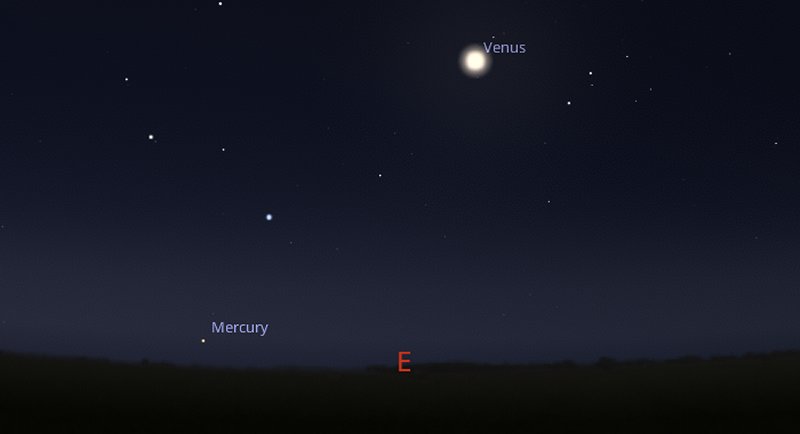 |
| |
|
Remember that the magnitude scale is back to
front, so the more negative the number, then the brighter an object is. To
put that into context, our own Sun has a magnitude of around -26 so that is
why you never attempt to look at it through binoculars or a telescope! For
this reason, I would not be tempted to use your telescope to get a better
view of Venus and Mercury next week as the Sun will be rising in the same
spot a little later and you don't want to accidentally catch a glimpse of
it! |
| |
|
While we are on the subject, on the morning
of Saturday 23rd, the centre of the Sun crosses the celestial equator as it
moves from the northern celestial hemisphere to the southern celestial
hemisphere. What on Earth does that mean? Well it marks the autumn equinox
or the point on the autumn calendar when we have equal periods of night and
day. In other words, we are halfway towards the shortest day in December -
hard to believe after all that hot weather last week! |
|
Monday 11th to
Sunday 17th September 2023 |
| |
|
The coming week will appeal more to the early
risers amongst us rather than staying up into the late evening. |
| |
|
Go outside anytime from 4am on Monday 11th
and a 12%-lit Waning Crescent Moon will have risen above the horizon towards
the east. Below and to the right of it will be Venus who will also appear
as a crescent shape if viewed in a telescope. |
| |
|
Aim your telescope to a point just below the
Moon, running in a line towards Venus and you should be able to find the
Beehive open cluster of stars, also known as M44 in the Messier Catalogue. |
| |
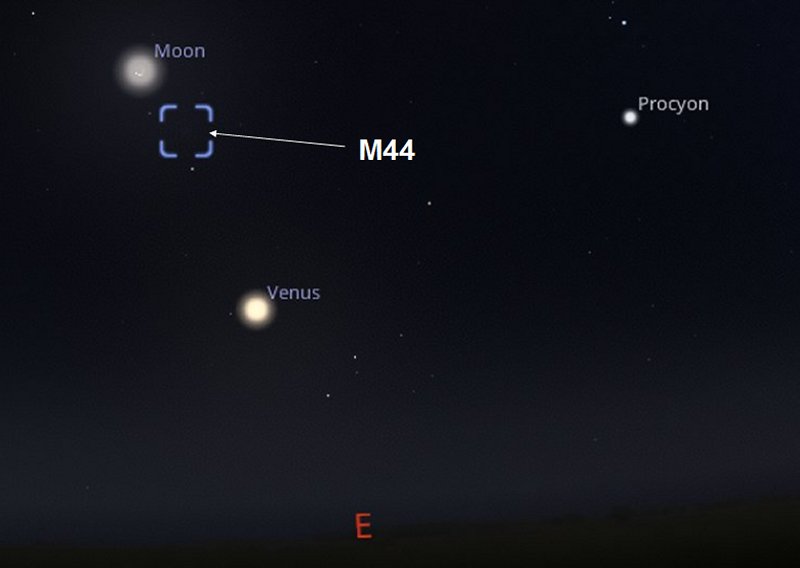 |
| |
|
The cluster has around 1000 stars and is one
of the closest clusters to us, about 610 light years away. It has a
magnitude of -3.7 so from a dark location you should even be able to see it
with the naked eye, although without a telescope it will resemble a fuzzy
blob. |
| |
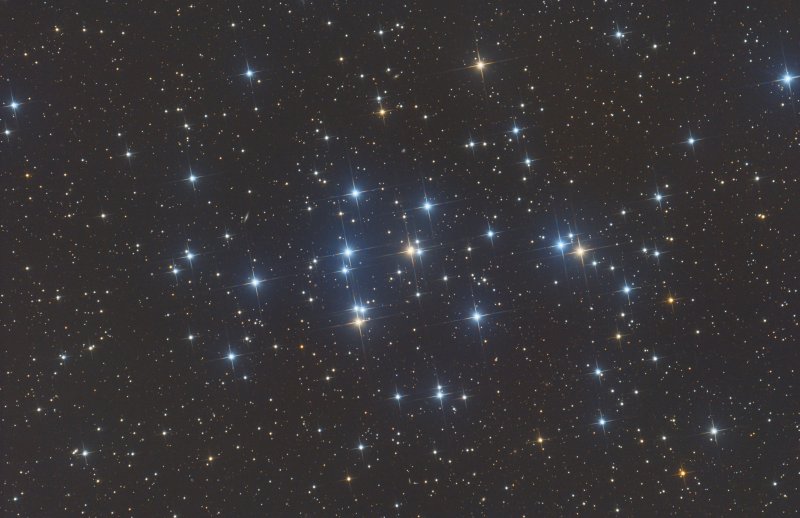 |
| |
|
M44 Image courtesy of Wikipedia |
| |
|
Much easier to spot is the bright star
Procyon to the right of the Moon and Venus. Procyon is the 8th brightest
star in the night sky with a magnitude of +0.34 and it is actually a binary
system, but you will only be able to see the main star. Its companion faint
white dwarf star will be invisible. |
| |
|
If you really fancy a challenge, a 1%-lit
Crescent Moon rises above the eastern horizon about an hour before sunrise
on the morning of Thursday 14th. To the right of it will be a magnitude
+1.8 Mercury. |
| |
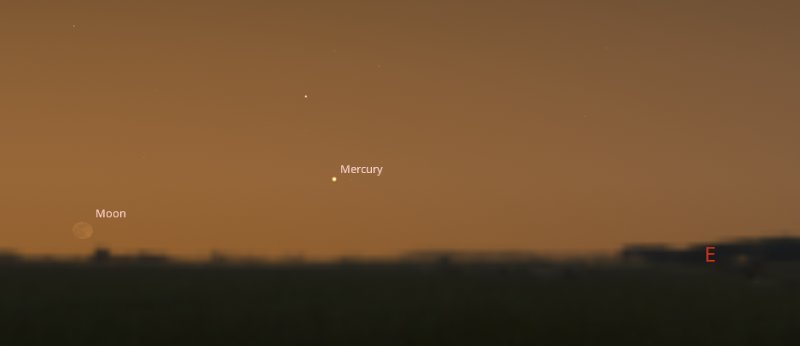 |
| |
|
Please remember not to risk using a telescope
to obtain a better view as the Sun will be rising shortly afterwards in the
same place! |
|
Monday 4th to
Sunday 10th September 2023 |
| |
|
If you venture outside around 11pm on Monday
4th, a 70%-lit Waning Gibbous Moon will have risen above the horizon towards
the east with a magnitude -2.5 planet Jupiter just to the right of it. |
| |
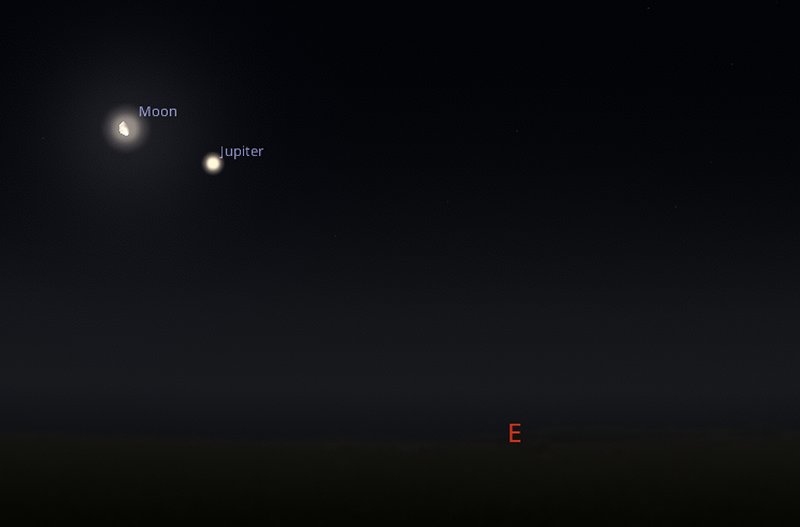 |
| |
|
Take the opportunity to aim your telescope
towards Jupiter at that time and it will be possible to see all four of the
Galilean Moons - running from left to right - Callisto, Ganymede, Europa and
Io. Sometimes it is not possible to see all four of them at once because
they are orbiting around Jupiter and are hidden from our view as they pass
behind it. |
| |
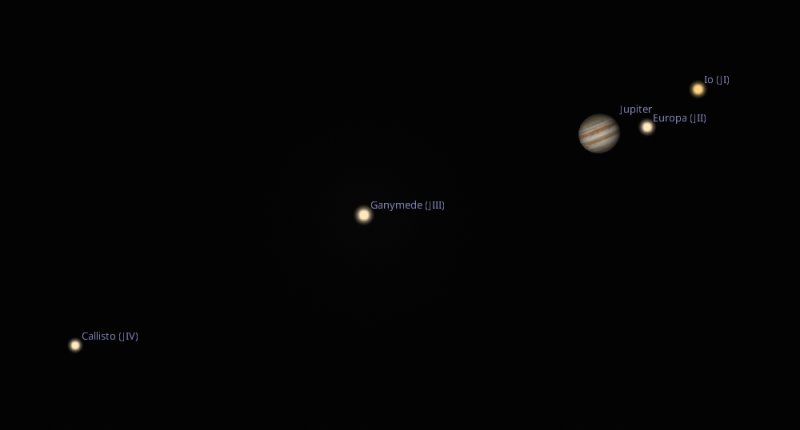 |
| |
|
When you look through your telescope's
eyepiece, the four moons will be the opposite way around to have I have
listed them - because of the way their optics are designed, astronomical
instruments always produce an inverted or upside-down view! |
| |
|
If you use binoculars, which are designed for
looking at things on the Earth, then the image will be the correct way
round. Binoculars incorporate an extra prism to correct the image, but the
process loses a little bit of light. This is done because if you're looking
at a ship in the distance, it's nice to have the sea at the bottom and the
sky at the top! Astronomers don't care if their target is the other way up
as it's far more important for them to collect as much light as possible! |
| |
|
There are a couple of great opportunities to
spot the International Space Station at the beginning of next week. On
Monday 4th it appears over the horizon to the west at 5.23am and reaches an
altitude of 77 degrees as it spends 6 minutes heading towards the east. On
Tuesday 5th, it will appear in the west at 4.37am and pass directly
overhead. |



























